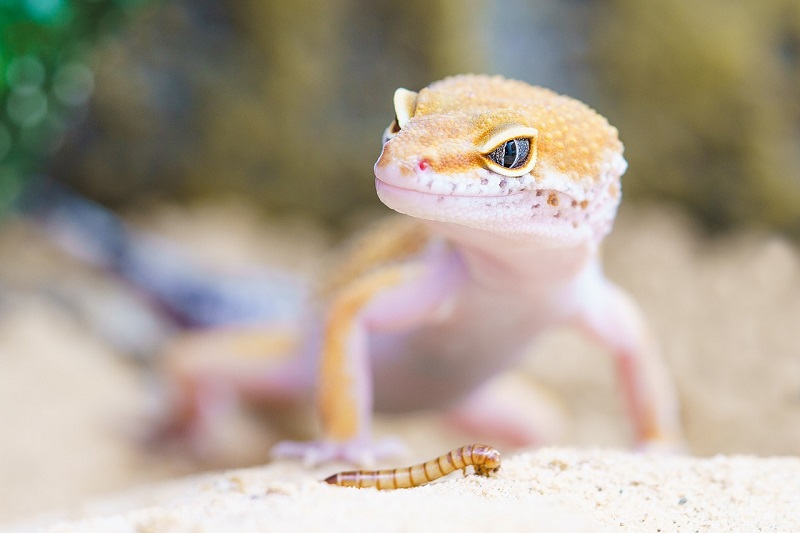
06 Feb Deciding to Get a Classroom Pet
Deciding to Get a Classroom Pet
Keeping a classroom pet benefits for both students and teachers. Animals are great additions to a classroom if you choose carefully. Pets teach kids about responsibility and empathy. As a teacher, you get a built-in teaching tool and fun attraction. Caring for an animal together can build camaraderie among your class. Just make sure to do your research and think through all of the needs.
Pros and Cons of a Classroom Pet
Pro: Students Learn About Responsibility. You can create a chore chart and assign students to handle different tasks throughout the week. Students could handle tasks like feeding the animal and cleaning its enclosure.
Pro: You Can Incorporate Math and Science Lessons into Pet Care. Feeding a classroom pet can help students to understand mathematical concepts. You might weigh or measure the food and track eating habits on a graph. Tailor biology lessons to the type of pet and teach students about adaptations, life cycles, and food webs.
Con: Pets Add Expenses to a Classroom. Teachers are often responsible for buying normal supplies out of pocket, and it’s highly likely that food and equipment for a class pet may fall into that category. Remember, too, that animals require veterinary care. Explore options for sliding scale fees, vaccination clinics, and pet insurance to help defray costs.
Con: Who Will Care for the Animal on Non-School Days. If you’re not interested in adding another responsibility at home, a classroom pet may not be the best idea. Someone has to care for this pet during breaks and on weekends. Depending on the age and responsibility of the students, you may be able to work out a way to share these responsibilities.
Pro or Con: Pets Raise Hygiene Issues. Any animal can carry bacteria or viruses. Likewise, a human can transfer some pathogens to animals. Anyone handling animals should wash their hands frequently. This is a great opportunity to teach children about hygiene. However, it can pose a challenge if your classroom doesn’t include a sink. You may also wish to make hand sanitizer available. Animal habitats themselves must be kept clean to avoid health hazards and foul smells.
3 Animals to Consider for a Classroom Pet
Some animals make great classroom pets, while others do not. Your class may have unique considerations, too, like allergies or phobias. Put some serious thought into choosing the right animal for your classroom, just as you would any pet. Consult with an animal care professional or veterinarian if you need help deciding.
Rabbits: A rabbit can handle a young child’s touch and curiosity. They are cute and cuddly, and they’re smart. You’ll have to ensure that they have a habitat large enough for them to exercise, and they’ll need daily interaction. Like any animal though, they can get upset when overstimulated. Their fur can cause allergic reactions, as can the hay that most people feed them.
Reptiles: Turtles and some species of lizards or snakes make good classroom pets. Snakes require infrequent feeding, and a garter or corn snake poses little to no danger to your students. Turtles are easy to pick up and handle. You can place them on the ground to walk around and let students observe. Lizards range from “beginner” to “difficult,” so research different kinds. All reptiles require certain temperatures and humidity levels. You will need to invest in the right lights and other apparatus.
Fish: While you can’t pet a fish like you can a rabbit or a guinea pig, there are other benefits. You don’t have to worry about allergies and bites. Fish are easy to care for, and they can add opportunities for students to learn about biology, ecology and even chemistry.
3 Animals to Avoid When Choosing a Classroom Pet
While dogs and cats make fantastic personal pets, they may not be the best choice for a classroom pet. Often, these animals require more interaction and disrupt a classroom, especially with young students. Some other animals might appear easy to care for, but read on for some words of caution.
Hermit Crabs: At first glance, hermit crabs seem like a great option. They’re low maintenance, and they have the unique habit of moving into new shells as they grow. But kids may grow bored. Hermit crabs don’t move much, and they startle easily.
Birds: “Smart” birds like cockatiels may seem like a great idea for a classroom pet. But, they can be a distraction and, in busy, noisy classrooms, they can act up and add to the chaos. They are also sensitive to noise and how they are handled: if they’re not calm and handled gently, they may bite, or even start to pluck their own feathers.
Hedgehogs: They may be cute and furry, but as nocturnal creatures, will not generally entertain students during the day. They can also react defensively when they wake, so they may be apt to bite a student who startles them. Kids may also find that their fur irritating.
Whether or not to add a pet to your classroom and your curriculum is a personal choice and one that administrators will have to approve. Do your research and make an informed choice. The right pet for your classroom may not be the same pet for the teacher across the hall, depending on your goals and plans.
PHOTO: Pixabay / CC0 Public Domain




No Comments